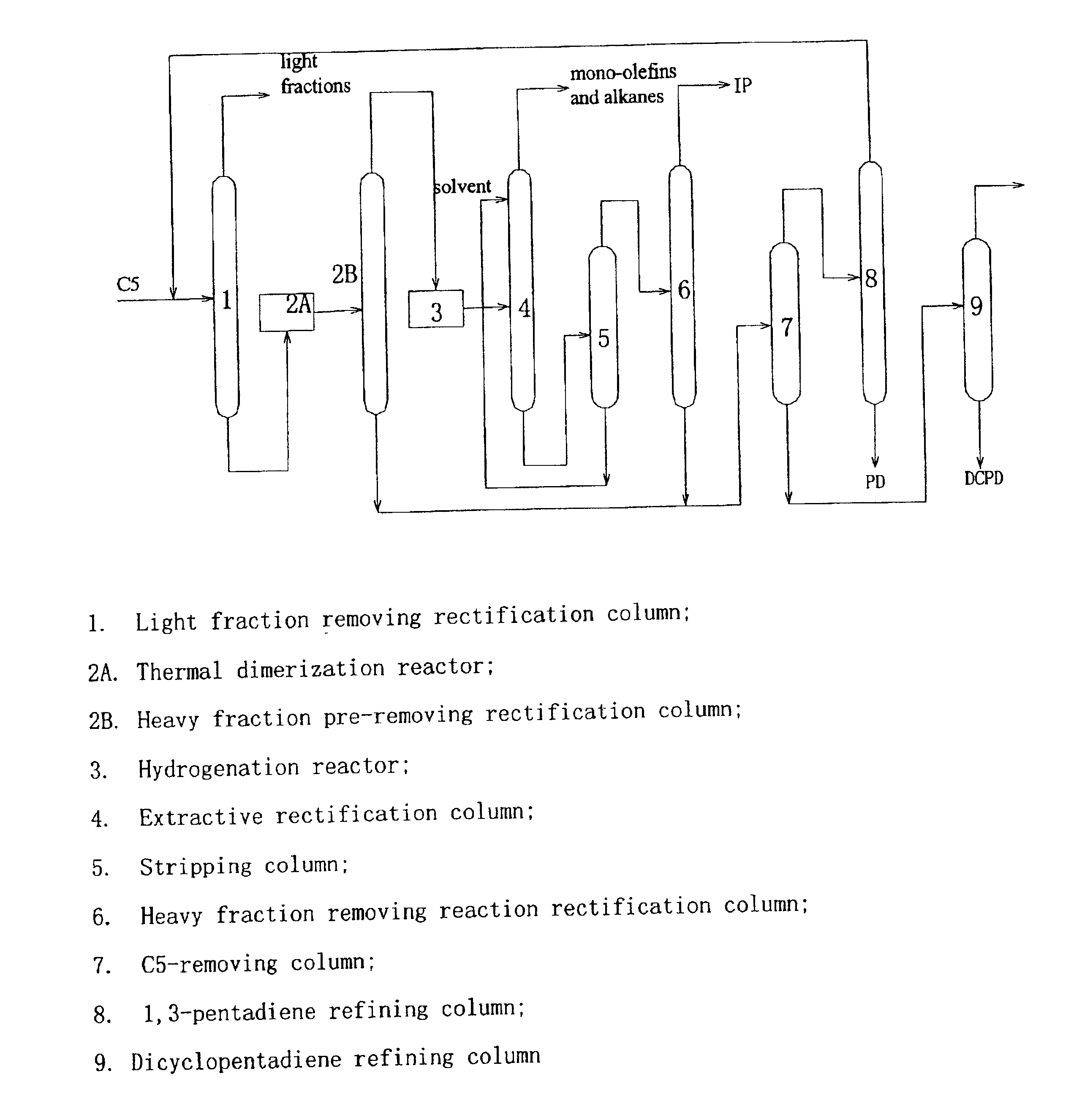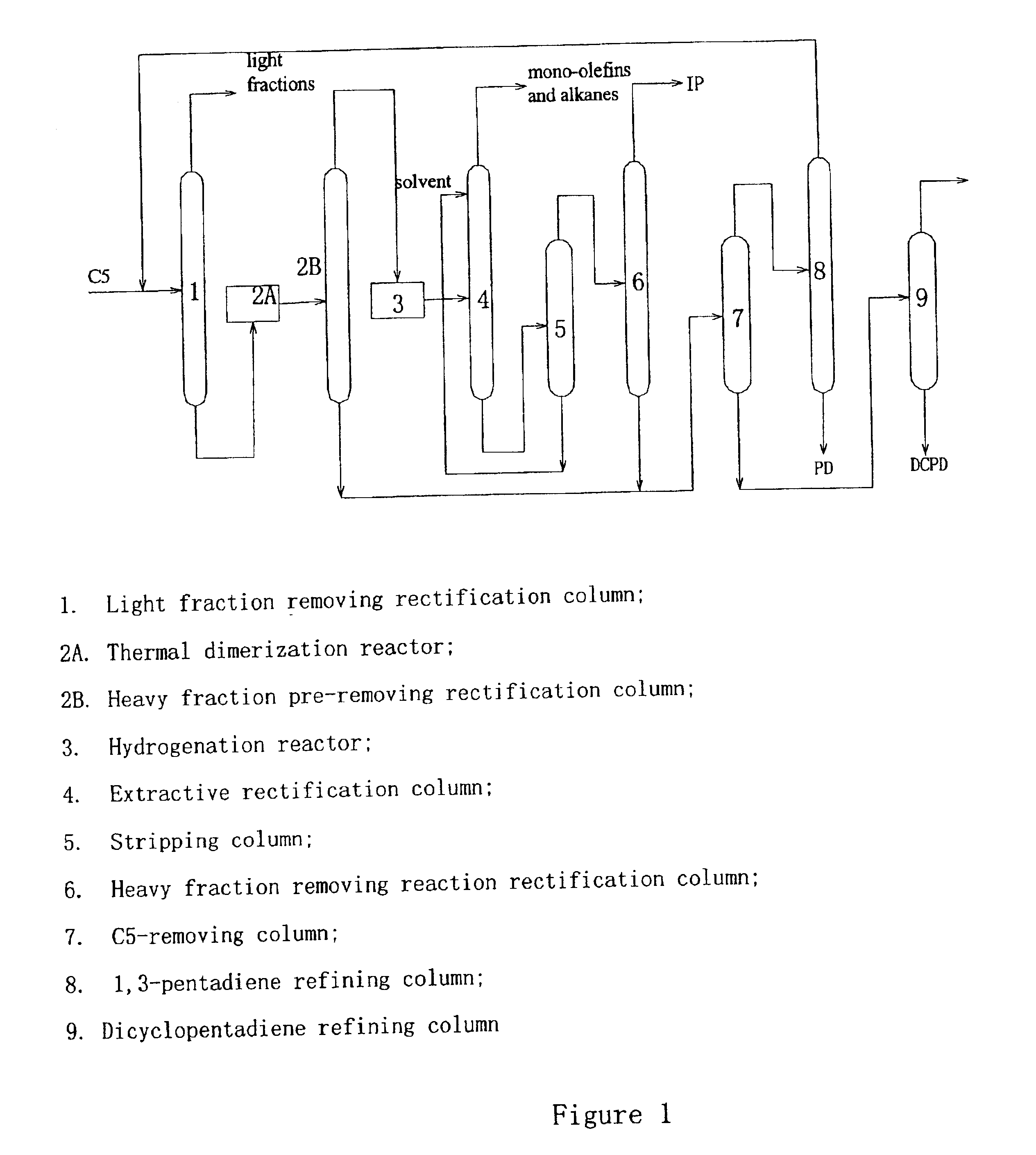Process for separating C5 cuts obtained from a petroleum cracking process
a petroleum cracking and process technology, applied in the direction of extraction purification/separation, fractional condensation purification/separation, azeotropic/extractive distillation, etc., can solve the problems of high consumption, complex process, and risk of operation, so as to reduce investment and production cost, reduce construction expenses, and reduce the effect of yield and adverse effects of c5 dienes
- Summary
- Abstract
- Description
- Claims
- Application Information
AI Technical Summary
Benefits of technology
Problems solved by technology
Method used
Image
Examples
example 1
Preparation of Catalyst-1
[0063]30 g of aluminum oxide as the support (the specific surface area measured by the BET method is 287 m2 / g) was impregnated with a mixture of 0.18% (by weight of copper) aqueous copper nitrate solution and a 0.2% (by weight of silver) aqueous silver nitrate solution, which mixture had been previously regulated to a volume of 22.5 ml and a pH of 1.0 using nitric acid and water, dried at 120° C. for 4 hours, calcined at 500° C. for 4 hours, and then cooled down to room temperature. Then the resulting support was impregnated with a 0.2% (by weight of palladium) aqueous palladium nitrate solution (also regulated to a volume of 22.5 ml and a pH of 1.0 using nitric acid and water), dried and calcined as above, and cooled to the room temperature. The resulting support was impregnated with a 2% (by weight of potassium) aqueous potassium hydroxide solution, dried and calcined as above. The above solutions were used at such an amount that the obtained catalyst cont...
example 2
Preparation of Catalyst-2
[0065]This example was carried out as in Example 1, except that the solutions were used at such an amount that the resulting catalyst contained 6% of copper, 0.03% of silver, 0.06% of palladium and 0.6% of potassium.
[0066]The resulting catalyst was referred to as Cat.2.
example 3
Preparation of Catalyst-3
[0067]This example was carried out as in Example 1, except that the solutions were used at such an amount that the resulting catalyst contained 3% of copper, 0.03% of silver, 0.03% of palladium and 0.3% of potassium.
[0068]The resulting catalyst was referred to as Cat.3.
PUM
| Property | Measurement | Unit |
|---|---|---|
| temperature | aaaaa | aaaaa |
| temperature | aaaaa | aaaaa |
| temperature | aaaaa | aaaaa |
Abstract
Description
Claims
Application Information
 Login to View More
Login to View More - R&D
- Intellectual Property
- Life Sciences
- Materials
- Tech Scout
- Unparalleled Data Quality
- Higher Quality Content
- 60% Fewer Hallucinations
Browse by: Latest US Patents, China's latest patents, Technical Efficacy Thesaurus, Application Domain, Technology Topic, Popular Technical Reports.
© 2025 PatSnap. All rights reserved.Legal|Privacy policy|Modern Slavery Act Transparency Statement|Sitemap|About US| Contact US: help@patsnap.com



